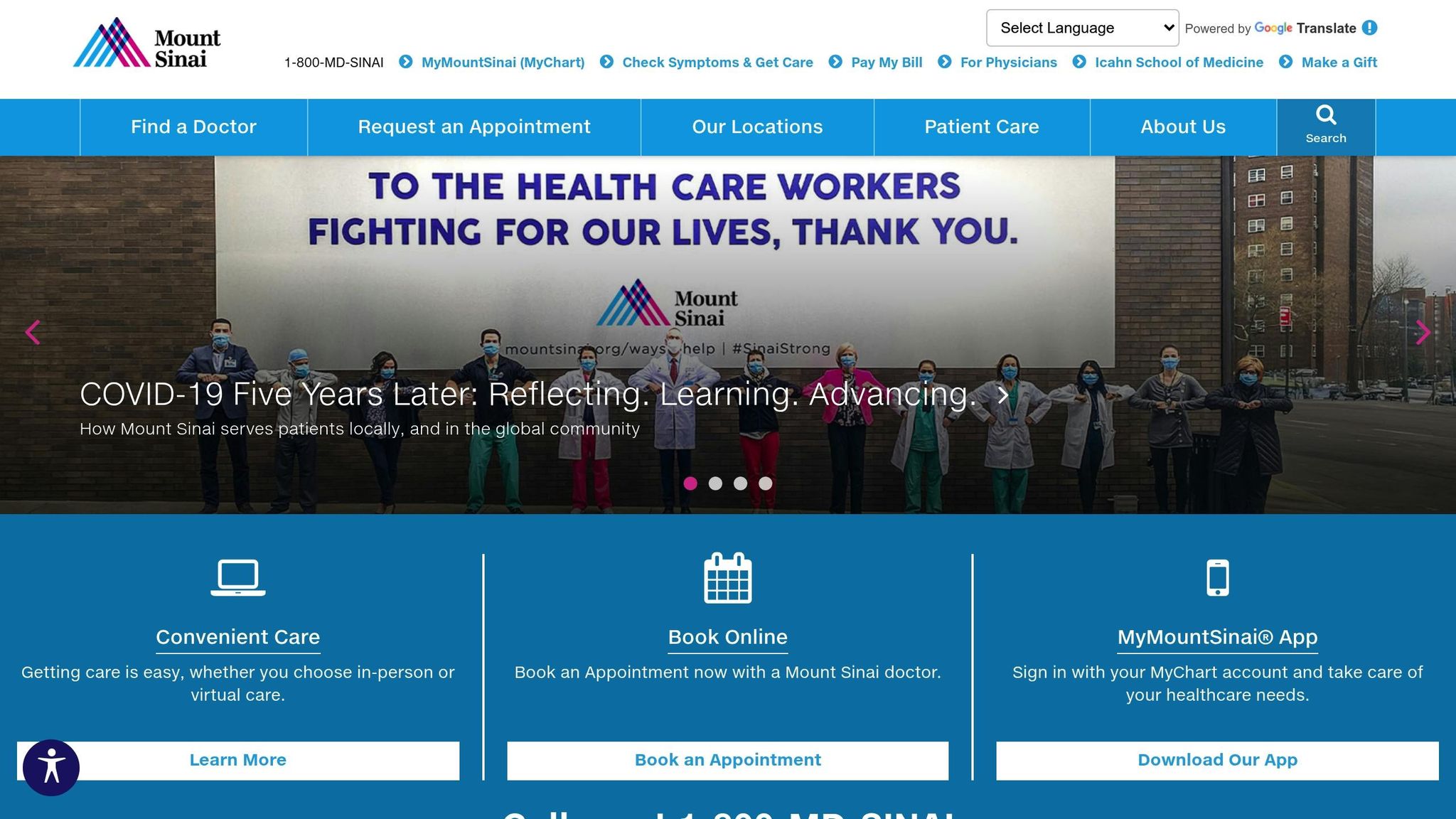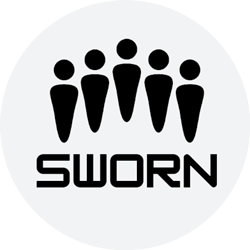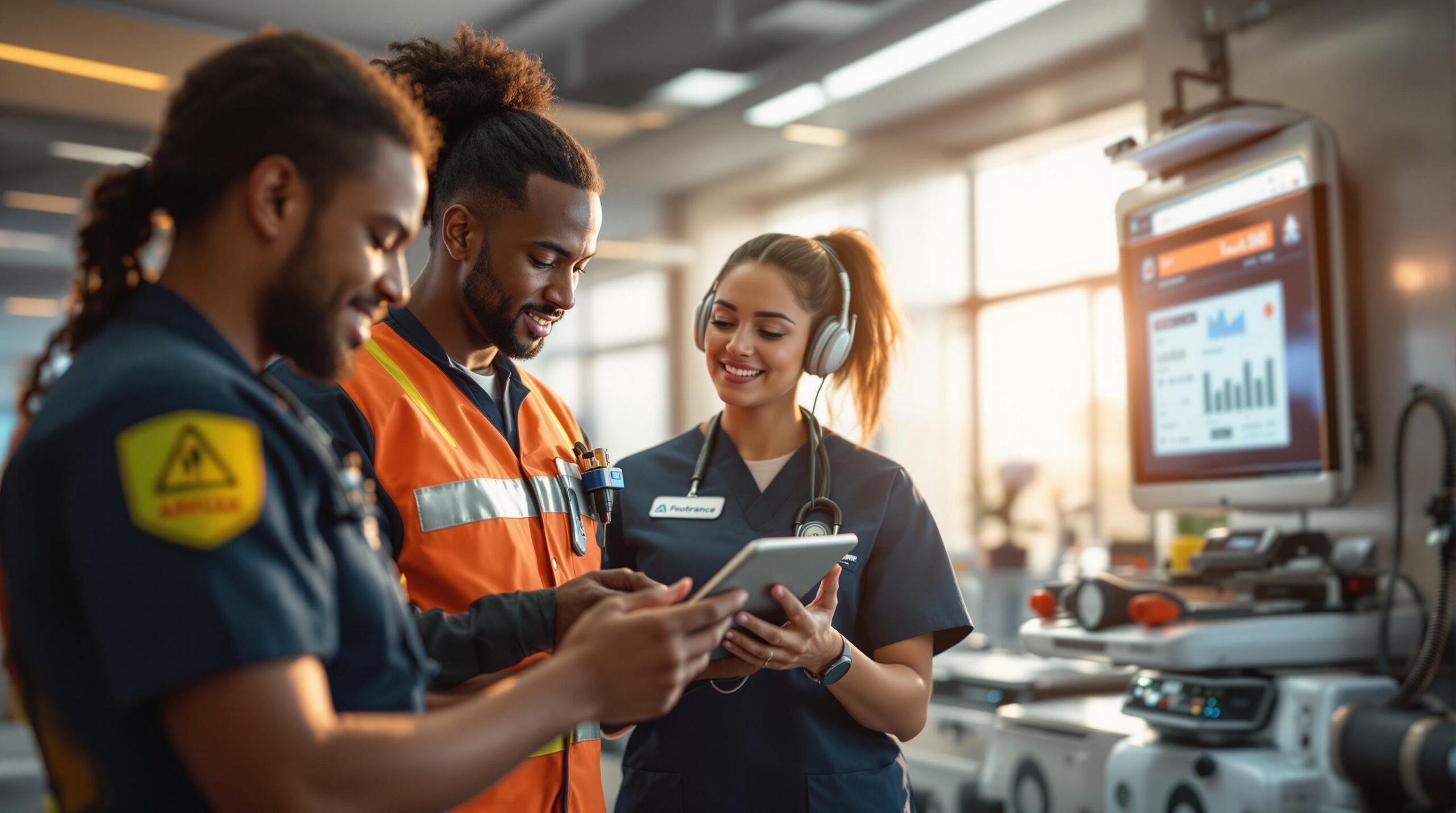AI-powered triage systems are changing emergency care, helping first responders stay safer and make faster decisions. Here’s how these systems are making an impact:
- Real-time Biometric Monitoring: Tracks first responders’ health during emergencies using wearables.
- Smarter Resource Management: Deploys teams and resources efficiently using AI analysis.
- Tailored Wellness Tools: Provides personalized mental and physical health support for first responders.
Platforms like SWORN.ai combine AI, biometric data, and experience-based insights to improve emergency response and address long-term challenges like high stress, PTSD, and suicide rates among first responders. These systems aim to enhance both performance and well-being.
Key Benefits of AI Triage Systems:
- Faster and more accurate patient assessments.
- Better resource allocation (staffing, equipment, and facilities).
- Continuous health monitoring for first responders to prevent burnout and health issues.
While these tools offer significant advantages, challenges like data integration, system reliability, and user trust remain. However, advancements in wearable tech and AI are paving the way for more effective emergency care solutions.
Mount Sinai Health System’s AI-Driven Future: Smarter Triage …

Core Elements of AI Triage Systems
AI-powered triage systems combine data processing with clinical applications to deliver fast and precise emergency assessments. These systems rely on three main components working together to provide timely insights.
EHR Data Integration
Electronic Health Record (EHR) integration is a critical part of AI-driven triage systems. By processing vast amounts of patient data, these systems help make quick, informed decisions during emergencies. Key benefits include:
- Instant access to patient histories and current conditions
- Data extraction from multiple healthcare sources
- Standardized formatting of medical information for better usability
With this wealth of patient data, AI algorithms can refine assessments, aiding emergency responders when every second counts.
AI Algorithms for Patient Assessment
The heart of modern triage systems lies in advanced AI algorithms. These algorithms, powered by machine learning models, can:
- Process vital signs and biometric data in real time
- Predict resource needs by analyzing historical patterns
- Highlight high-risk cases requiring immediate attention
For example, SWORN.ai’s platform uses data from wearable devices to monitor both physical and mental health during emergencies, offering critical insights on the spot.
Clinical Support Systems
Clinical Support Systems turn complex data into actionable insights, helping medical staff and first responders make better decisions quickly.
| Feature | Function | Benefit |
|---|---|---|
| Risk Scoring | Assesses the severity of patient conditions | Helps prioritize care effectively |
| Resource Allocation | Recommends the best use of resources | Improves emergency response efficiency |
| Decision Support | Delivers evidence-based guidance | Promotes consistent care standards |
SWORN.ai enhances this process by combining CAD/RMS event tracking with personalized recommendations. The system integrates real-world experience with AI insights, helping emergency teams perform at their best.
Together, these components create a powerful framework that improves emergency response outcomes while supporting first responders. The next section will explore how these systems are applied in real-life scenarios.
AI Triage Systems: Current Applications
AI-driven triage systems have reshaped emergency care, improving patient care processes and supporting first responders in critical situations.
Triage Speed and Accuracy Results
AI systems are transforming how emergency assessments are conducted. By combining machine learning algorithms with patient data, these systems enhance the accuracy of patient evaluations and cut down waiting times.
Key areas of focus include:
- Real-time vital sign monitoring to provide instant updates on patient status
- Automated risk assessments leveraging detailed health data
- Dynamic prioritization of cases based on severity and available resources
These advancements contribute to more effective resource coordination and quicker decision-making.
Emergency Resource Management
In busy emergency settings, AI tools are helping optimize how resources are used. They provide data-driven insights for staffing, equipment, and facility management, ensuring resources are allocated efficiently.
| Resource Type | AI-Driven Optimization | Impact |
|---|---|---|
| Staffing | Adjusting schedules based on demand forecasts | Faster response times |
| Equipment | Tracking inventory in real time | Fewer resource shortages |
| Facilities | Managing patient flow and space use | Better capacity handling |
While effective resource management is crucial, keeping first responders healthy and safe is just as important.
First Responder Health Monitoring
The health risks faced by first responders highlight the need for tools that monitor their well-being in real time. SWORN.ai addresses this issue by integrating biometric tracking and workload analytics to detect potential health concerns early.
"SWORN.AI is the first public safety health, wellness and performance platform integrating AI, real-time biometrics, real-world experience data, and steadfast peer, family & professional support."
This platform uses real-time biometric data, such as vital signs and stress levels, to provide tailored support for first responders. It identifies potential health risks before they escalate, ensuring responders stay effective and safe during emergencies.
Key features include:
- Real-time biometric tracking during high-stress situations
- Personalized wellness advice based on individual health trends
- Compatibility with existing emergency systems
- Proven strategies to help manage stress effectively
sbb-itb-aa48905
AI Triage: Advantages and Limitations
AI vs. Manual Triage Comparison
AI triage systems can quickly sort patients by analyzing vital signs, medical history, and symptoms. This speeds up evaluations and helps make faster decisions during emergencies. Studies show that these systems can be especially helpful during mass casualty events or public health crises. However, using AI in such critical scenarios isn’t without its challenges.
Common Implementation Issues
Setting up AI triage systems comes with hurdles. One of the biggest issues is ensuring high-quality data and making sure new platforms work seamlessly with older healthcare systems. Another challenge is getting staff to trust and effectively use AI recommendations, which often involves addressing learning curves and initial skepticism.
A strong technical foundation is essential. This includes having reliable networks, secure data storage, regular maintenance, and backup systems to avoid failures. Rolling out the system in stages and providing thorough training can help staff understand how it works and see its real-world benefits.
For first responders, using AI triage tools means the system must perform reliably, even in tough situations. Platforms like SWORN.ai are designed to deliver quick and accurate decisions under pressure, ensuring they remain effective when it matters most.
Next Steps in AI Triage Development
Wearable Device Integration
AI triage is taking emergency care to the next level by connecting with wearable devices. These gadgets monitor vital signs, stress levels, and physical activity, offering a detailed picture of a person’s health. By analyzing this biometric data, AI systems can identify potential problems early, giving healthcare providers a chance to intervene before situations escalate.
This steady flow of health data also helps improve decision-making in the field, paving the way for more effective pre-hospital care solutions.
Pre-Hospital Triage Solutions
AI is transforming pre-hospital triage by using real-time biometric data to enhance field assessments. This tech-driven approach allows for quicker, more accurate evaluations, which helps reduce unnecessary trips to emergency departments and ensures that resources are used more efficiently.
First Responder Support Tools
Platforms like SWORN.ai showcase how AI can support first responders by combining real-time biometric data with insights from their experiences. These tools are designed not just for immediate response but also for long-term well-being, addressing the unique challenges faced by emergency personnel.
Here are some of the standout features:
| Feature | Purpose | Impact |
|---|---|---|
| Real-time Biometrics | Tracks health continuously | Assesses stress levels instantly |
| Experience Data Integration | Analyzes contextual factors | Offers personalized interventions |
| Support Resource Network | Provides wellness resources | Boosts resilience and recovery |
These tools aim to improve both the immediate performance and the overall health of first responders. By blending AI with real-world experience data, these systems offer tailored support that meets the demanding needs of emergency professionals, ensuring they are better equipped to handle their roles both physically and mentally.
Conclusion
AI triage systems are transforming emergency care and first responder health by combining real-time biometric monitoring with AI-driven assessments. This integration offers a more responsive approach to managing emergencies and supporting the well-being of those on the front lines.
Platforms like SWORN.ai play a critical role by providing tailored interventions and continuous health tracking. These systems address immediate needs while also focusing on long-term wellness through features like:
- Real-time health monitoring for early detection and action
- Data-driven wellness strategies tailored to individual needs
- Workload analytics to manage stress and fatigue
- Personalized support systems designed for first responders
The future of AI triage lies in blending cutting-edge technology with practical tools. As these systems develop, they will incorporate advances in wearable tech and pre-hospital care, further enhancing their capabilities. SWORN.ai exemplifies this by combining sophisticated AI with user-friendly tools to meet the unique challenges faced by emergency personnel.
This progress is especially important given the alarming trend of suicide as a leading cause of death among first responders. By focusing on early intervention and personalized care, AI triage systems help protect those who dedicate their lives to serving others, strengthening both emergency response and overall well-being.
The integration of technology and first responder support is paving the way for ongoing advancements in emergency care, promising better outcomes for both operations and the people behind them.





